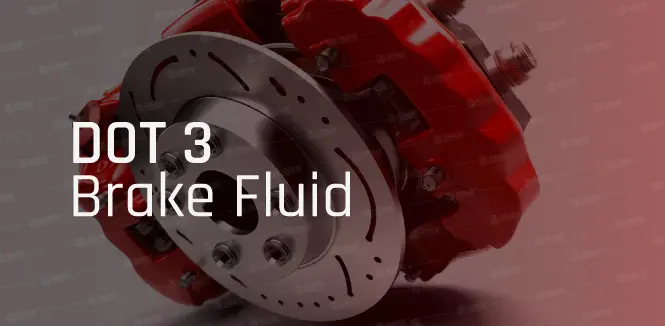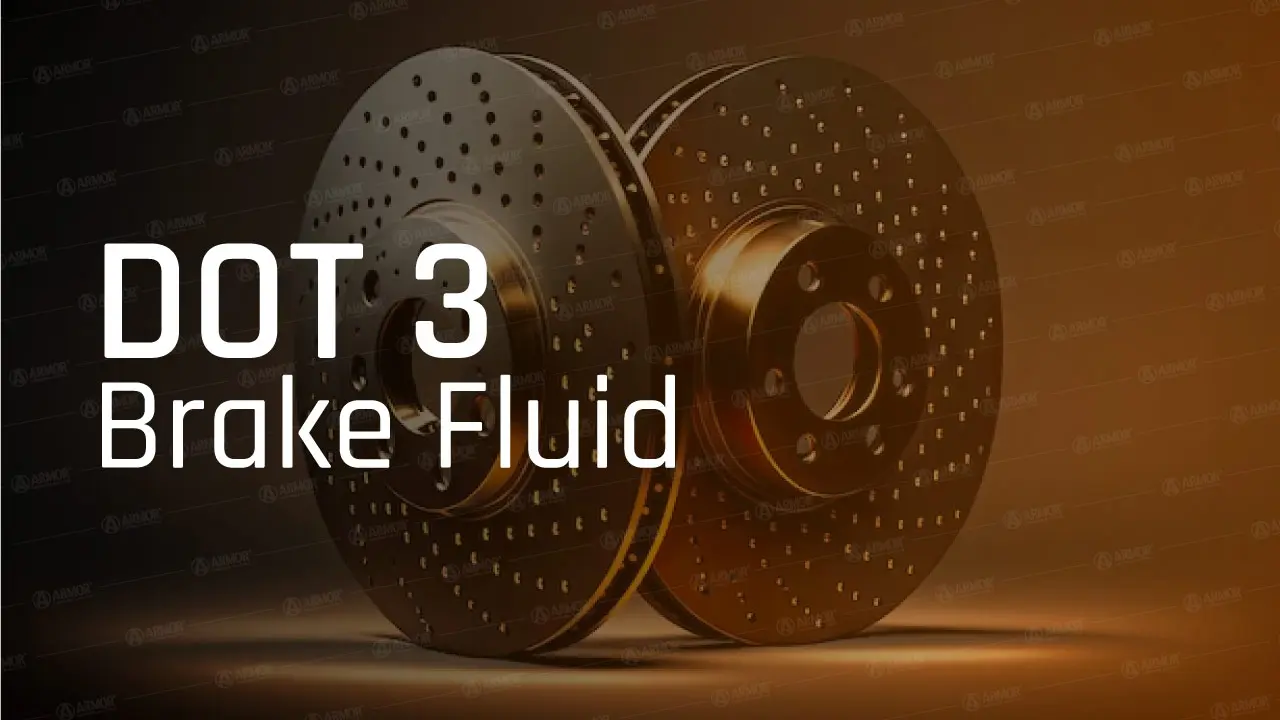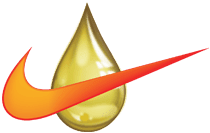- Armor Blog
- Products
- Your Guide to DOT 3 Fluid: Everything You Need to Know
What is DOT 3 Fluid? and What is it used for?

DOT 3 fluid is essential to maintaining the performance and safety of your vehicle. It is commonly used in automotive braking systems; however, is it always the right choice to make? In this comprehensive guide, we will explore everything you need to know about DOT-3 brake fluid.
DOT 3 fluid, also known as brake fluid, is primarily used in hydraulic brake systems of vehicles. It is responsible for transmitting force and pressure from the brake pedal to the brake components, allowing the vehicle to slow down or stop.
The high boiling point of DOT 3 fluid makes it suitable for use in braking systems that generate a significant amount of heat during operation. Brake fluids must have the ability to withstand high temperatures to ensure it does not vaporize even under extreme conditions, which could lead to brake failure.
In addition to its use in hydraulic brake systems, DOT-3 brake fluid can also be used in clutch systems that require a fluid with similar properties. However, we recommend you consult an expert and check the vehicle’s manufacturer manual to ensure compatibility before using DOT 3 fluid in a clutch system.
Dot 3 vs Dot 4 Brake Fluid
Dot 3 vs Dot 4 Brake Fluid are commonly used in vehicles, but they have some distinct differences. One of the main differences between the two is their boiling points.
DOT 4 brake fluid has a higher boiling point compared to DOT 3 fluid, which means it can withstand higher temperatures without vaporizing.
This makes DOT 4 brake fluid more suitable for vehicles that undergo heavy braking or operate under extreme conditions, such as racing cars or vehicles used for towing.
Another difference between DOT 3 and DOT 4 brake fluids lies in their compatibility with different materials. DOT 4 fluid is known to be compatible with a wider range of materials, including synthetic rubber and certain metals, making it more versatile in various brake systems.
On the other hand, DOT 3 fluid is generally compatible with most braking system components but may not be suitable for systems that specifically require DOT 4 fluid.
Read our blog post on key differences and applications of dot 3 vs. dot 4 brake fluid.
What Color is DOT-3 Brake Fluid?
DOT-3 brake fluid is typically amber or light golden in color. This coloration is due to the chemicals and additives mixed with the fluid to enhance its performance and longevity.
Over time, the brake fluid may darken due to contamination from moisture, dirt, or other impurities. Color change is an indicator of its condition, but it is not an accurate one.
Regular inspections and fluid changes as recommended by your vehicle’s manufacturer are crucial to maintaining the performance of your braking system.

Benefits and Drawbacks of Using DOT-3 Brake Fluid
Benefits of DOT-3 brake fluid for vehicle’s braking system.
High Boiling Point: which ensures efficient braking even under demanding conditions. This is particularly important in vehicles that undergo frequent and prolonged braking, such as those used for towing or driving in mountainous terrain.
Readily Available and Affordable: Due to its price, it is one of the most popular choices for many vehicle owners. Its compatibility with a wide range of braking system components also adds to its appeal.
Drawbacks of using DOT 3 fluid
Hygroscopic Nature: Dot 3 readily absorbs moisture from the atmosphere which can lead to a decrease in the boiling point of the fluid over time, potentially compromising the effectiveness of the braking system. Regular fluid inspection and replacement are crucial to mitigate this issue.
Compatibility: DOT 3 fluid may not be suitable for vehicles that require a higher boiling point or specific compatibility with certain materials.
Common Misconceptions about DOT-3 Brake Fluid
There are a few common misconceptions surrounding DOT-3 brake fluid that need to be addressed.
One such misconception is that higher DOT-rated fluids, such as DOT 4 or DOT 5 or DOT 5.1 provide better braking performance. While it is true that higher-rated fluids have higher boiling points and improved properties, that does not necessarily mean they will enhance the braking performance of a vehicle that requires DOT 3 fluid.
It is important to use the fluid recommended by the vehicle manufacturer to ensure optimal performance and safety.
Another misconception is that mixing different types of brake fluids, such as 3 DOT Brake Fluid and 4 DOT Brake Fluid, is acceptable. In reality, mixing different brake fluids can lead to unpredictable effects on the braking system, potentially compromising its performance.
It is crucial to follow the manufacturer’s recommendations and guidelines when it comes to selecting, using, and topping up brake fluids.
Essential Points
DOT-3 brake fluid is essential for the effective and safe operation of your vehicle’s braking system. With its high boiling point, it stands out for its ability to perform reliably under various driving conditions.
However, bear in mind that the composition of DOT 3 fluid is what creates this magical outcome. When enriched with advanced additives, it delivers spectacular results and long-lasting life.
What happens when cheap additives and oils are used is a different story. Fake dot 3 fluids cannot be trusted to offer the same performance or maintain the required specifications.
To remain safe, you must always buy your brake fluid from known lubricants brands, and when you are buying in bulk, you can ask for certificates to make sure the manufacturers are following international standards.
Are you interested in becoming a distributor of our high-quality Dot 3 Brake Fluid. Partner with Armor Lubricants, the best brake fluid manufacturer in the UAE offers competitive pricing and a variety of marketing support materials to help you grow your business. Contact us to know more.
 Spear Lubricants
Spear Lubricants Armada lubricant
Armada lubricant Ace lubricants
Ace lubricants Perfect lubricants
Perfect lubricants Enzo lubricants
Enzo lubricants Lawrence lubricants
Lawrence lubricants